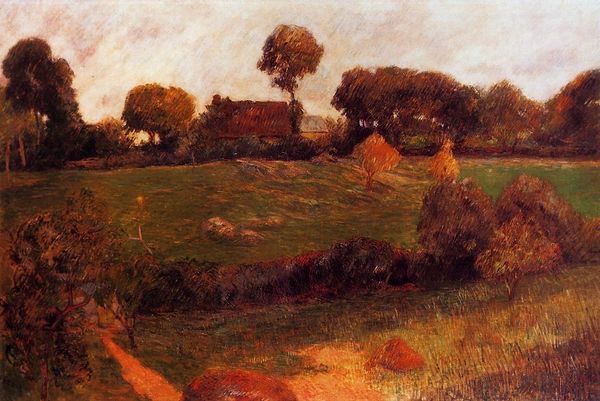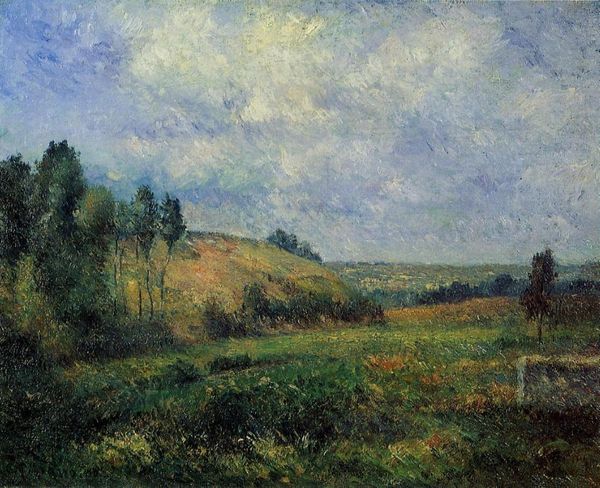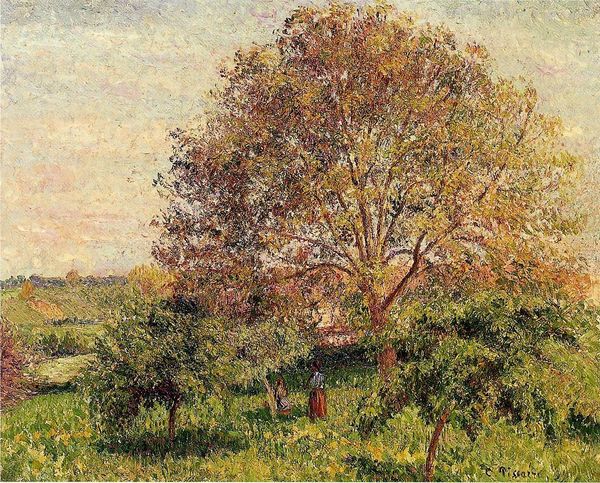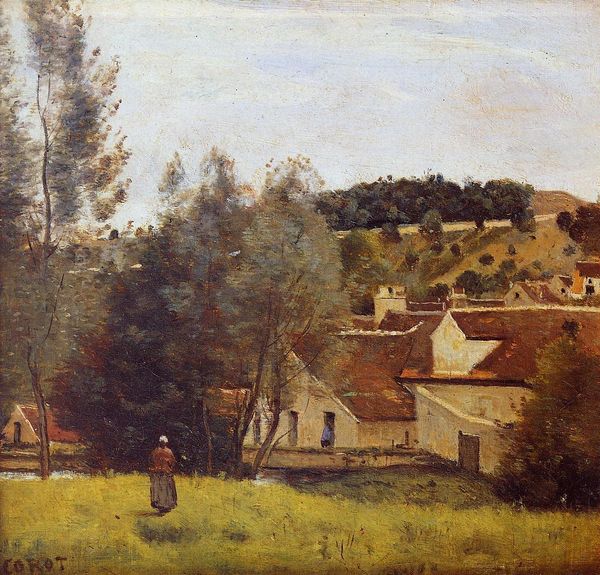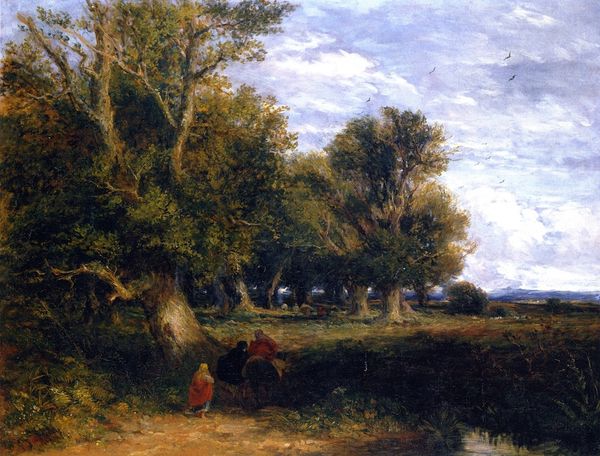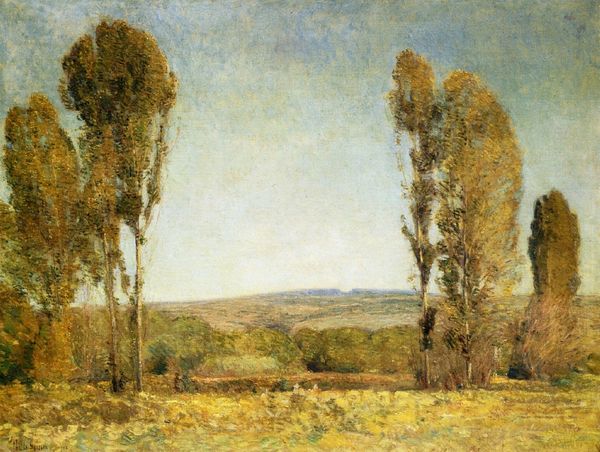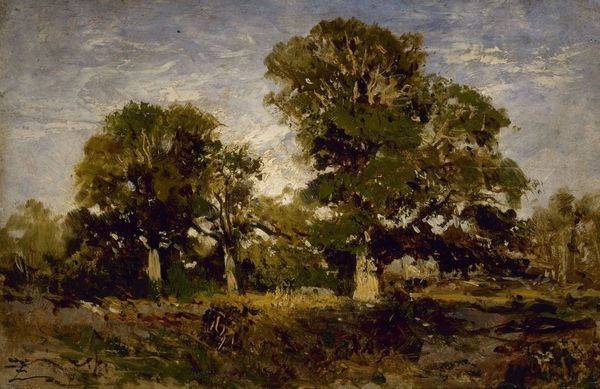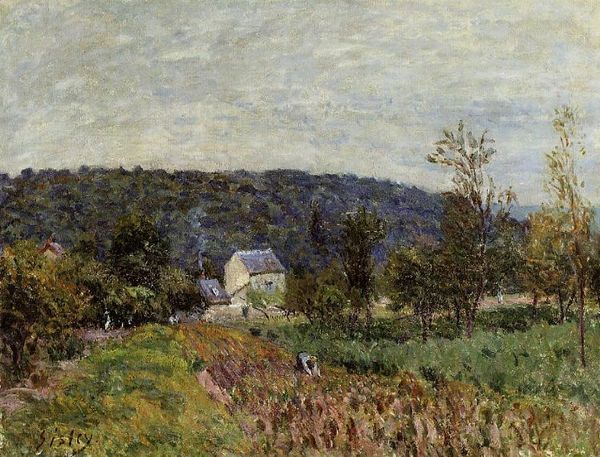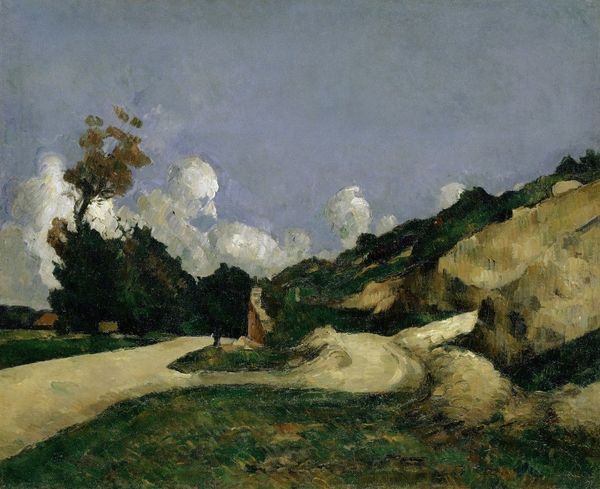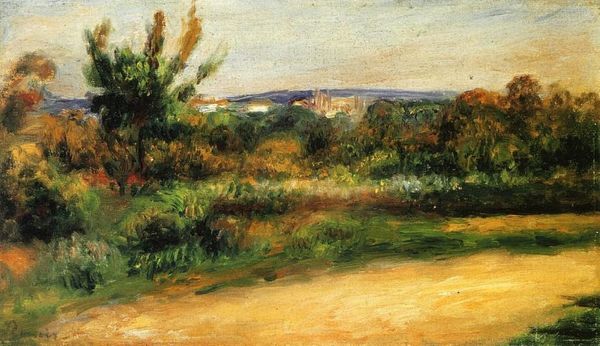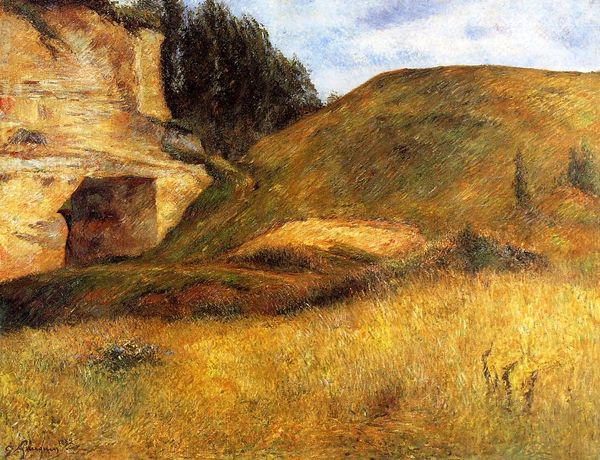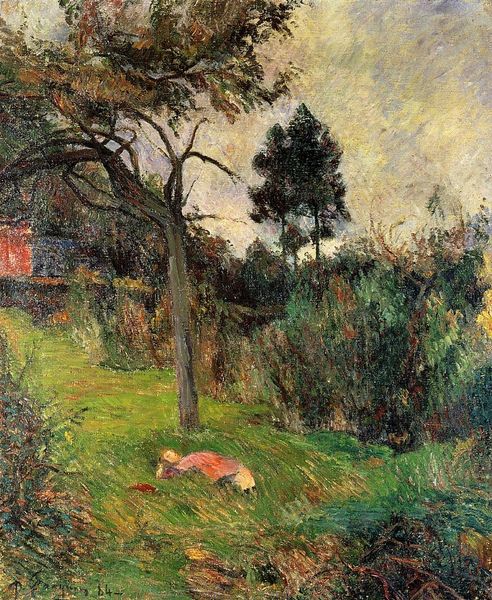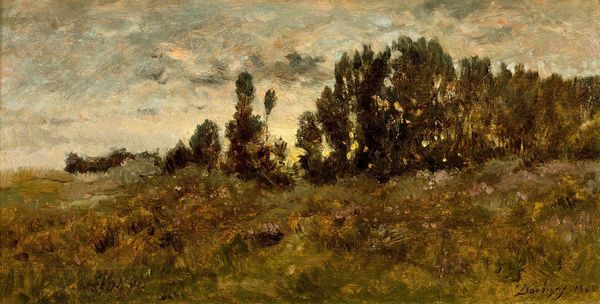
painting, plein-air, oil-paint
#
tree
#
painting
#
impressionism
#
plein-air
#
oil-paint
#
landscape
#
oil painting
#
natural-landscape
#
naturalism
#
realism
Copyright: Public domain
Curator: Upon first encountering Gauguin's "Haymaking near Dieppe" from 1885, now housed at the Centre Pompidou, what captures your attention? Editor: There’s a certain subdued energy about it, wouldn’t you say? The textured brushstrokes build up this dense field, the heaviness of the trees, a landscape imbued with a distinct rustic quality. The material presence feels undeniable. Curator: Absolutely. Painted en plein air, it reveals Gauguin's engagement with naturalism. But let's consider the setting – Dieppe, a coastal town, a location chosen perhaps for the realities of peasant life depicted. Do you see echoes of the social discourse present within the rural communities represented, and what might it tell us? Editor: It's interesting that you highlight the socio-political context. I am much more inclined to read his brushwork through a lens of the composition's balance. The diagonals of the field create a receding space and draws our eyes into the dark heart of the trees in the distance. There’s a formal rhythm here, despite the apparent looseness of execution. Curator: But surely that supposed looseness speaks volumes. The indistinct rendering of the figures in the field perhaps is not mere artistic choice but may serve as a visual commentary of labor. The figures nearly meld with the ground they toil on; does it prompt questions about social visibility? Editor: I concede to the point regarding the integration of figures within the setting, yet that very integration can be observed structurally and reinforces the balance between figures and the nature they’re set against. In essence, it's a harmonious merging into a comprehensive visual totality. Curator: Ultimately, both elements are at play, contributing to a complicated understanding of rural life beyond merely the aesthetic or representational level. Gauguin may engage with form, but the work simmers with questions of socio-economic inequalities inherent in those spaces and times. Editor: I suppose considering the layering of historical context enriches the viewing experience beyond just visual interpretation. The more we investigate it the more meaning it acquires, it seems.
Comments
No comments
Be the first to comment and join the conversation on the ultimate creative platform.
